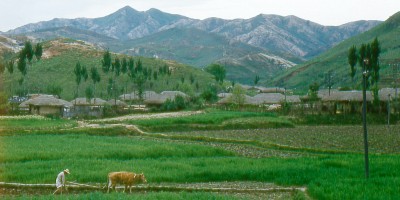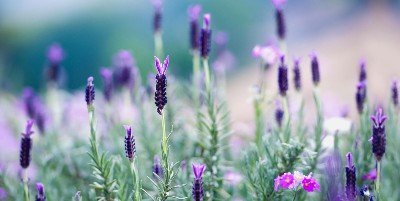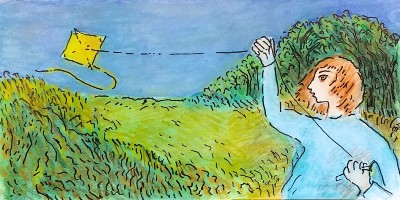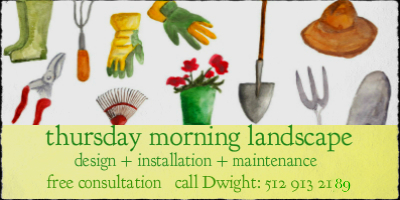 bringing nature, nurseries and gardeners together Oct 15, 2021
|
|
Houseplant advisory: as we head into a glorious weekend, with highs in the mid-70s, be aware that the lows on Sunday and Monday evenings are likely to dip down to 49 degrees. Some advice from the Natural Gardener: bring in the house-plants, and protect your tomato plants. ❦

Korean Natural Farming: at its Monday evening meeting, Austin Organic Gardeners hosted a fascinating presentation by expert Austin Moline. This tradition is a mixture of Korean fermentation practices and Japanese natural farming, and yields impressive results in fruit and crop production. rice & brown sugar ❦

Lavender in India: faced with climate change, farmers in the Jammu and Kashmir regions are switching from maize to lavender, reports the Guardian. It's called 'the Purple Revolution,' and the new plant, which thrives in heat and poor soil, is giving farmers four times the income they earned from maize. Aroma Mission ❦

Hancock golf course-to-park: there's no kite-flying or picnicking upon the great lawns of this central golf course right now. . . but there could be Please join us to help heal the land and open up what will someday be a crown jewel in Austin's park system. (painting: Linda Anderson) Hancock Conservancy ❦
_________________________________________________

Growing chairs on trees: Gavin Munro, a British designer, grows chairs and other pieces of furniture from trees in his unique English orchards. "It's a bit like organic 3-D printing, he says,"except it's a little bit slower, and we're using water and sunshine as our fuel." Gavin works with mostly oak, ash and willow trees, and his chairs retail for around $3,000. Al Jazeera / architect ❦

Central Texas Gardener: the issues of planting for tree equality and heat island effects are discussed by experts Colin McMichael and Andrew Smiley from TreeFolks.
YouTube ❦
_________________________________________________
Support the Austin Garden. This newsletter relies on donations from readers. Please consider making a donation today. Many thanks ; - ) PayPal ❦
 How to Plant a Tree
by Amanda Moon
Fall and winter are the perfect times to plant trees in Texas. Last year notwithstanding - our soil does not freeze and our temperatures don’t often fall below 15 degrees Fahrenheit, making it easier to transplant than any other time of the year.
In addition, cooler temperatures allow us to get away with less watering after planting and a longer period of establishment before the hot temperatures head our way again. Larger shade trees, i.e. oaks and elms, are especially grateful for an earlier planting date.
Another benefit is that there's less transplant stress on a tree that's dormant. Even evergreens tend to take a top growth 'break' during the winter.
To make sure that you have a healthy tree even when it has lost all its leaves, scratch the end of a few branches through the bark with your fingernail. If you see green, the tree is still alive to the tips of the branches – a very good sign of viability. (Again, last year was an exception to that test so buy from reputable sources.)
Ten Tricks of the Trade
1. Choose the right location. Leave enough space for your tree to grow and stay clear of power lines above and below the ground. Call 811- a free service; always better to be safe than sorry.
2. Double check your soil type against the tree you want to plant. A pecan, for example, will struggle if planted in very shallow soil.
3. Make sure that you start with a healthy specimen from a reputable source. Most local nurseries buy their stock from local growers and so the tree is already adjusted to our climate.
4. Dig an irregular hole. Tree roots can be lazy and a perfectly round hole can trick a tree into believing it is still in the pot and it may fail to grow roots outwards.
5. Be sure to make the hole a few inches shallower than the root ball of the tree. Use the length of a shovel to measure. In time the tree will settle in flat.
6. When you remove the pot, if the tree doesn't come out easily, roll the pot sideways on the ground to loosen or cut away if necessary. Do not put unneeded pressure on the trunk of the tree.
7. Water as you fill in to eliminate air pockets in the soil.
8. Use a mix of mostly native soil and a compost or soil blend made for tree planting.
9. Only cover the root ball a few inches and don’t pile up soil or mulch around the trunk (ever!). Create a donut-style ring around the outside root-ball area of the tree for a water basin, using extra soil to build it. Top dress with mulch to preserve soil moisture.
10. Water in again one final time into the center of the ring using a root stimulator such as SuperThrive to encourage quicker rooting.
Make sure after your new tree is planted that you water deeply at least once a week. (Increase watering the later into the hotter months you plant.) Don’t stake the tree unless you are planting in a windy location. Un-staked trees are stronger and at maturity are better at withstanding windstorms.
_____________________________________________
Whoever said that a tree hole must be twice as wide as the pot clearly had never tried digging in our “soil”!
_____________________________________________
Avoid using chemical fertilizers on trees, especially during their first three seasons. This is the amount of time it takes for a tree to become fully established, and the roots are especially sensitive during this time.
Apply compost and organic root stimulators. After they're established, use an organic fertilizer during the growing season.
Continue watering as needed to keep the tree healthy. A drought-stressed tree cannot always revive itself to its former glory when the rains come again.
Lastly, a few specifics for those special situations. Our soil is tough to dig through sometimes. If you can’t go down more than a few inches, create a large raised bed with all those extra boulders lying around and plant up. Make sure you give the tree a decent width and height to the bed based on the final size of the chosen species.
Along those same lines, whoever said that a tree hole must be twice as wide as the pot clearly had never tried digging in our “soil”! Be sure to make it wide enough so that once the tree is in the ground you can get your arm down around it to push the soil fully down. Otherwise, I (and the tree) forgive you if it isn’t any bigger than that! ❦
|
 It's About Thyme Legacy Publications.
Contact newsletter editor Darrel Mayers with any ideas for articles or interesting links at internationalrain@yahoo.com (hitting 'reply' to this email won't work) |
|
|